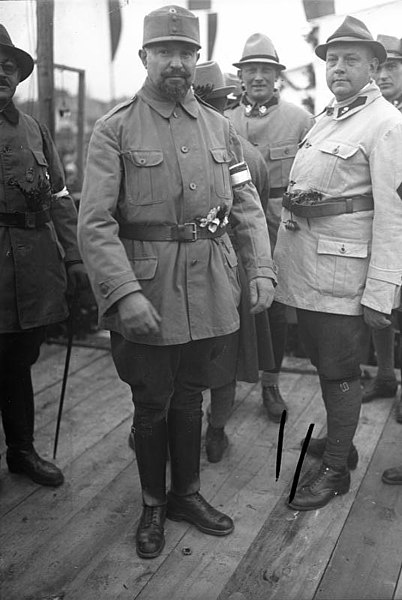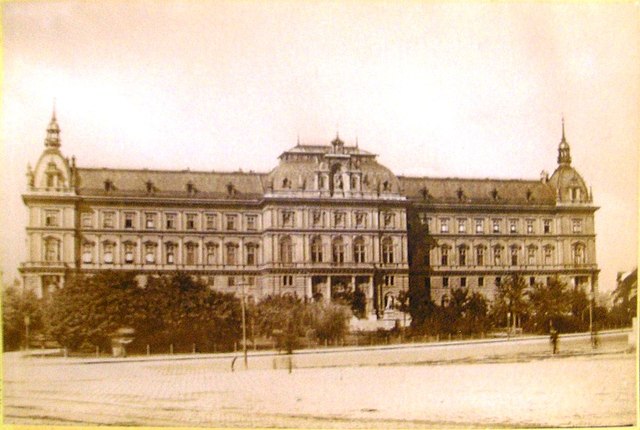Richard Steidle was an Austrian lawyer and the leader of the paramilitary Heimwehr in Tyrol. He was a leading representative of the pro-independence tendency on the far right of Austrian politics and as such was opposed to the Nazi Party which supported the incorporation of Austria into a Großdeutschland. Following the Anschluss, Steidle was sent to the Buchenwald concentration camp, where he was killed in 1940.
Steidle (middle), 1930
Steidle (bearded) accompanying Waldemar Pabst (carrying bouquet) on his entry to Austria from Italy, c. 1930
The Heimwehr or Heimatschutz was a nationalist, initially paramilitary group that operated in the First Austrian Republic from 1920 to 1936. It was similar in methods, organization, and ideology to the Freikorps in Germany. The Heimwehr was opposed to parliamentary democracy, socialism and Marxism and fought in various skirmishes against left-wing and foreign groups during the 1920s and 1930s. Some of its regional groups also opposed Nazism while others favored it. In spite of its anti-democratic stance, the Heimwehr developed a political wing called the Heimatblock that was close to the conservative Christian Social Party and took part in both the cabinet of Chancellor Carl Vaugoin in 1930 and in Engelbert Dollfuss' right-wing government from 1932 to 1934. In 1936 the Heimwehr was absorbed into what was at the time the only legally permitted political party in Austria, the Fatherland Front, and then later into the Frontmiliz, an amalgamation of militia units that in 1937 became part of Austria's armed forces.

Richard Steidle (with beard)
The Vienna Palace of Justice
Heimwehr march in Wiener Neustadt, 1928
Ernst Rüdiger Starhemberg in Heimwehr uniform.






